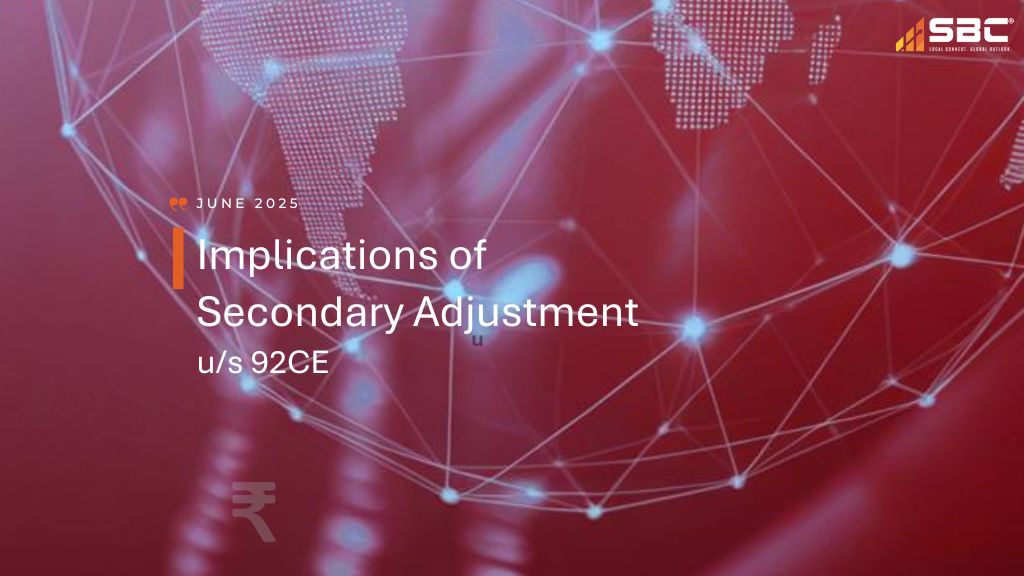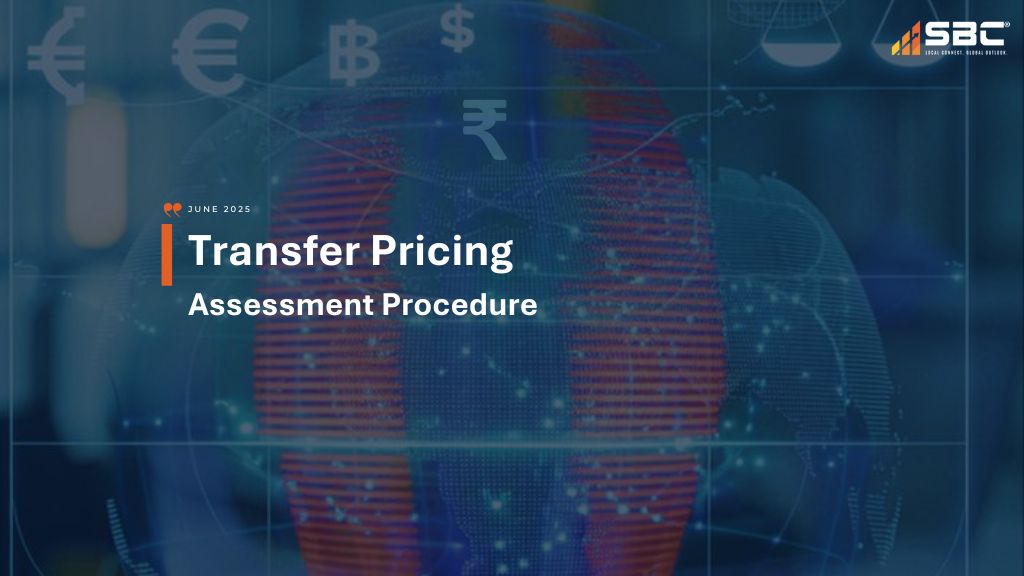Implications of Secondary Adjustment u/s 92CE
Home > Implications of Secondary Adjustment u/s 92CE

June 20, 2025
Implications of Secondary Adjustment
Foresight for Taxpayers
Taxpayers must adopt a forward-looking approach to manage secondary adjustment risks under Section 92CE. Any primary adjustment—whether voluntary, audit-driven, or arising from APA, Safe Harbour, or MAP—must be closely reviewed to identify “excess money” retained by foreign AEs. This amount must be repatriated to India within prescribed time to avoid it being treated as a deemed loan, triggering notional interest under Rule 10CB. Where repatriation is not feasible, opting to pay a one-time additional tax at 20.9664% offers a clean exit from continued compliance and interest exposure. A proactive year-end transfer pricing review is critical to ensure alignment, minimize tax risks, and safeguard against future disputes.
Primary Adjustment
A Primary Adjustment refers to modifying the transfer price of an international transaction to align with the arm’s length principle. It arises when there is a need to correct the reported income of the taxpayer due to non-compliance with the arm’s length principle.
Statutory Triggers for Primary Adjustment u/s 92CE(1)

Implications of Secondary Adjustment
Secondary Adjustment
A Secondary Adjustment refers to an adjustment in the books of accounts of the taxpayer and its Associated Enterprise (AE) to reflect the actual allocation of profits consistent with the transfer price determined as a result of a primary adjustment.
• Secondary Adjustment Provisions u/s 92CE are attracted in the following cases:
– The amount of Primary Adjustment is exceeding Rs. 1 Crore.
– The Primary Adjustment is made not relate to AY 2016-17 (FY 2015-16) or earlier.
• Where applicable, the primary adjustment amount must be repatriated to India within prescribed time. If not, the excess money is deemed to be an advance by the taxpayer to the AE.
• In such cases, the taxpayer must compute and offer to tax the notional interest on the deemed advance, following the methodology prescribed under Rule 10CB(2) of the Income-tax Rules.
• Repatriation is the transfer of funds or assets from a foreign country back to the home country. In taxation, it usually involves bringing back profits, dividends, or capital earned overseas.
• Countries may adopt different approaches to secondary adjustments:
1. Deemed Dividend:
Excess profits treated as dividends distributed to the parent entity, possibly subject to withholding tax.
2. Deemed Loan:
Excess profits treated as a loan from one AE to another; interest imputed accordingly.
3. Capital Contribution:
Recognizes excess profits as equity infusion.
India has adopted the Deemed Loan Approach under Section 92CE to address cases of non-repatriation.
Implications of Secondary Adjustment
Time limit for repatriation of excess money and Computation of 90 days – Rule 10CB (1)

Interest Rate on Excess Money – Rule 10CB(2)
(i) Where the international transaction is denominated in Indian rupee – One-year MCLR of SBI On 1st April of PY +3.25%(325 BPS).
(ii) where the international transaction is denominated in foreign currency – 6 Months LIBOR on 30th September of PY + 3%(300 BPS).
Alternative to Secondary Adjustment
• Section 92CE permits the assessee to pay a final additional tax of 18% (effective 20.97% including surcharge 12% and cess 4%) on unrepatriated excess money to avoid secondary adjustments and interest beyond the tax payment date.
• This tax is final, with no further deductions or credits permitted under the Income-tax Act.
Verify Email
Verify your email address below to download the PDF
CONTACT US
RELATED POSTS
-
 24 Sep 2025Transfer Pricing (TP) Compliance Developments in Mauritius - Finance Act 2025
24 Sep 2025Transfer Pricing (TP) Compliance Developments in Mauritius - Finance Act 2025 -
 24 Sep 2025360° Fixed Asset Management
24 Sep 2025360° Fixed Asset Management -
 20 Jun 2025Implications of Secondary Adjustment u/s 92CE
20 Jun 2025Implications of Secondary Adjustment u/s 92CE -
 16 Jun 2025Transfer Pricing Assessment Procedure
16 Jun 2025Transfer Pricing Assessment Procedure -
 31 May 2025ITAT Delhi Ruling on Treaty Abuse Allegation and DTAA Benefits
31 May 2025ITAT Delhi Ruling on Treaty Abuse Allegation and DTAA Benefits



